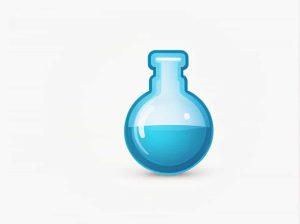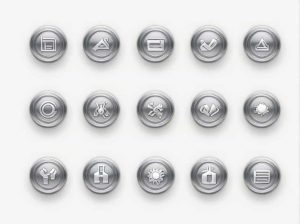Niobium is a transition metal with significant applications in various industries including aerospace superconductors and steel production. It is a lesser-known but highly valuable element due to its strength corrosion resistance and superconducting properties.
In this topic we will explore the symbol of niobium its atomic properties physical and chemical characteristics and its many uses.
What Is the Chemical Symbol for Niobium?
The symbol for niobium is “Nb”.
Understanding the Symbol “Nb”
- The name “Niobium” comes from Niobe a figure in Greek mythology the daughter of Tantalus.
- It was originally known as Columbium (Cb) before being officially named Niobium in 1949 by the IUPAC.
- The symbol “Nb” represents Niobium in the periodic table.
Basic Information About Niobium
| Property | Value |
|---|---|
| Symbol | Nb |
| Atomic Number | 41 |
| Atomic Mass | 92.91 u |
| Group | 5 (Transition Metals) |
| Period | 5 |
| State at Room Temperature | Solid |
| Color | Silvery-gray |
Atomic Structure of Niobium
Protons Neutrons and Electrons
- Protons: 41
- Neutrons: Usually 52 (for the most common isotope Nb-93)
- Electrons: 41
- Electron Configuration: [Kr] 4d⁴ 5s¹
Niobium’s electron configuration makes it a transition metal with excellent conductivity and strength which contributes to its various industrial applications.
Physical and Chemical Properties of Niobium
1. Physical Properties
- Appearance: Silvery-gray metallic luster.
- Melting Point: 2477°C (4491°F).
- Boiling Point: 4744°C (8571°F).
- Density: 8.57 g/cm³.
- Ductility: Highly malleable and ductile.
- Conductivity: Good electrical and thermal conductor.
2. Chemical Properties
- Oxidation States: Common oxidation states include +5 +3 and +2.
- Corrosion Resistance: Forms a protective oxide layer making it highly resistant to rust and chemical attacks.
- Superconductivity: Niobium is used in superconducting magnets and circuits.
- Reaction with Acids: Resists most acids but dissolves in hydrofluoric acid.
Where Is Niobium Found?
1. Natural Sources
- Found in minerals like pyrochlore and columbite.
- Major niobium-producing countries include Brazil Canada and Australia.
- Brazil has the largest reserves of niobium supplying over 90% of the world’s demand.
2. Industrial Extraction
- Extracted from pyrochlore ore using a refining process.
- Purified through chemical separation and electrolysis.
Uses of Niobium
1. Aerospace and Superalloys
- Used in jet engines rocket parts and spacecraft components.
- Improves the heat resistance of alloys making it ideal for extreme environments.
2. Steel Production
- Added to steel alloys to increase strength and durability.
- Used in pipelines bridges and construction materials.
3. Superconductors and Electronics
- Niobium-titanium alloys are used in MRI machines and superconducting magnets.
- Used in semiconductors and electronic circuits for better performance.
4. Medical Applications
- Niobium implants are used in bone surgery because they are biocompatible and non-toxic.
- Used in dental and orthopedic implants due to its corrosion resistance.
5. Nuclear Reactors
- Used in nuclear reactor components due to its ability to withstand high radiation and temperatures.
6. Jewelry and Coinage
- Used in hypoallergenic jewelry for people with metal allergies.
- Combined with other metals to create colorful and durable coins.
Niobium Alloys and Their Benefits
1. Niobium-Titanium (Nb-Ti)
- Used in superconductors and MRI machines.
- Provides high strength and flexibility.
2. Niobium-Zirconium (Nb-Zr)
- Used in nuclear reactors due to high heat resistance.
- Improves corrosion resistance in extreme environments.
3. Niobium-Steel Alloys
- Increases strength and toughness in automobiles bridges and pipelines.
- Used in high-performance tools and machinery.
Niobium vs. Other Transition Metals
| Metal | Uses | Corrosion Resistance | Melting Point | Superconductivity |
|---|---|---|---|---|
| Niobium (Nb) | Aerospace superconductors steel alloys | High | 2477°C | Yes |
| Titanium (Ti) | Medical implants aircraft jewelry | High | 1668°C | No |
| Tantalum (Ta) | Electronics capacitors surgical tools | Very High | 3017°C | No |
| Zirconium (Zr) | Nuclear reactors corrosion-resistant coatings | Very High | 1855°C | No |
Niobium stands out due to its combination of strength conductivity and corrosion resistance making it valuable across many industries.
Interesting Facts About Niobium
- Discovered in 1801 by Charles Hatchett an English chemist.
- Initially named Columbium (Cb) and later changed to Niobium (Nb) in 1949.
- Niobium-based superconductors help power MRI machines and ptopic accelerators.
- Over 90% of the world’s niobium supply comes from Brazil.
- Niobium is used in fireworks and colored glass production.
Niobium with the symbol “Nb” and atomic number 41 is a versatile transition metal known for its high strength corrosion resistance and superconducting properties. It plays a crucial role in aerospace medicine steel production and electronics. Its unique properties make it one of the most valuable elements in modern technology and engineering.



